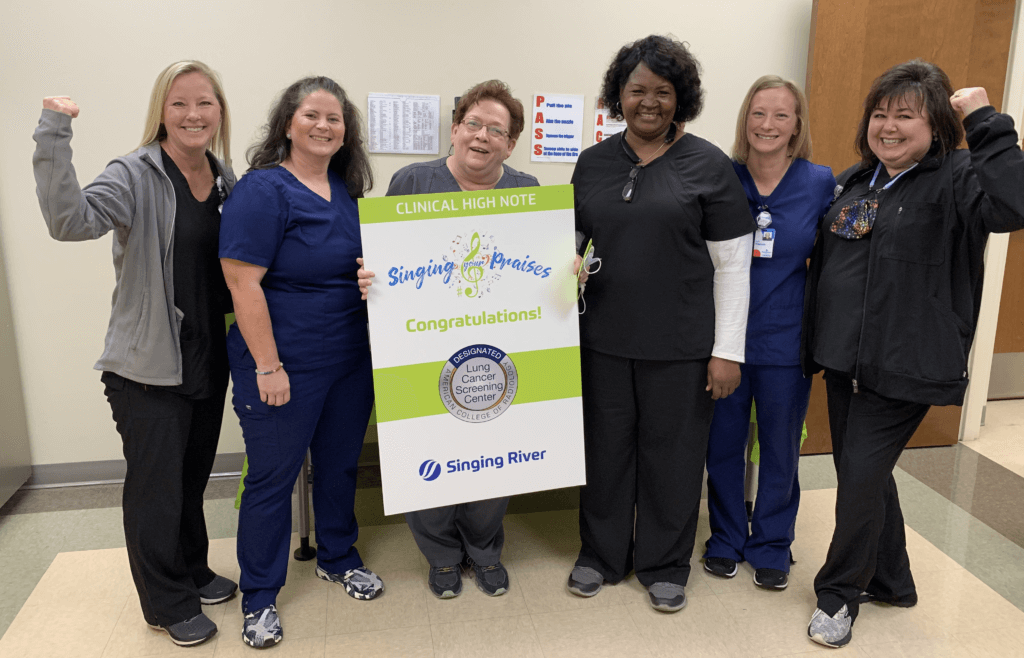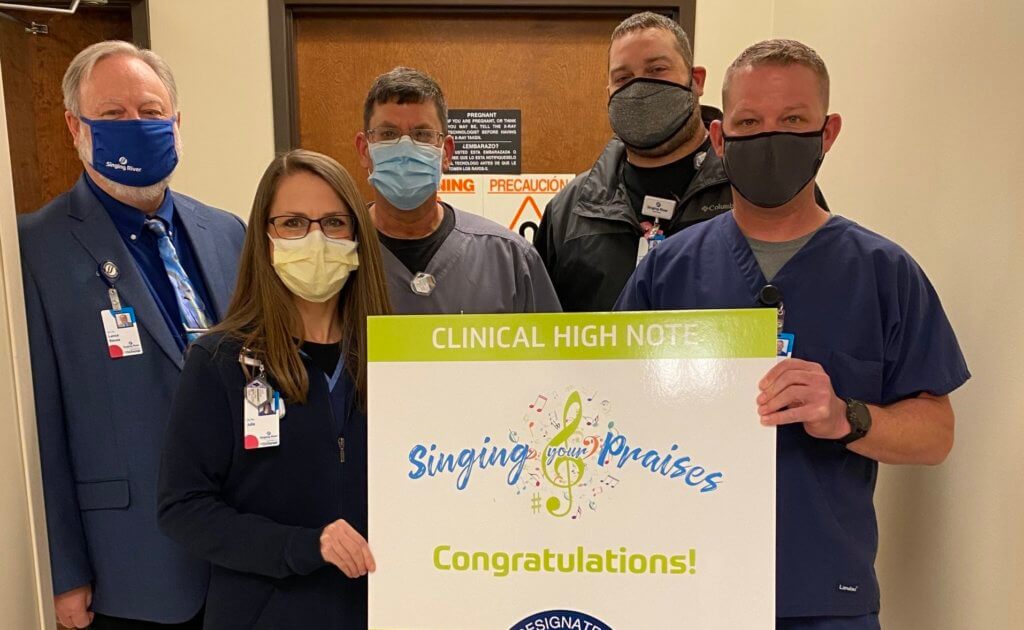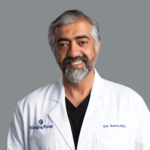Singing River Diagnosing Lung Cancer Earlier with New Robotic-Assisted Procedure
Each year, more people in the U.S. die from lung cancer than any other type of cancer. Lung cancer is typically diagnosed in its later stages since it is not often detected until symptoms appear or because traditional diagnostic methods cannot reach small nodules – a mass of rounded or irregular shape – deep in the lungs.
In 2021, an innovation that holds promise to fight lung cancer has arrived at Singing River Health System. Robotic-assisted bronchoscopy allows Pulmonologists at Singing River to access and take samples of suspicious nodules in hard-to-reach areas of the lungs to determine if they are cancerous. The Monarch™ Platform at Singing River provides greater control and precision – along with the 3D vision that enables doctors to reach parts of the lungs that are not accessible with conventional diagnostic methods.
The Monarch Platform makes it possible to diagnose and treat lung cancer earlier, allowing our comprehensive team of pulmonologists, oncologists, and surgeons to provide patients with multiple treatment options – greatly improving their chances of survival. We are excited about the promise of this technology and the ability to offer a more hopeful future to our patients with lung cancer.
Dr. Ijlal Babar, Pulmonologist & Director of Pulmonary Critical Care & Hypertension
Improving Lung Cancer Diagnosis
Lung cancer screening is the first step in detection and diagnosis. Low Dose CT Scans are commonly used to screen for lung cancer. Experts recommend those who have a history of heavy smoking, currently smoke, or have quit smoking within the past 15 years, and are between the ages of 55 and 80 years old be screened for lung cancer every year.
If a suspicious nodule is detected during a CT scan, the patient may be referred for robotic-assisted bronchoscopy.
Team Approach in Fighting Lung Cancer
At Singing River, the robotic-assisted bronchoscopy procedure is performed by a pulmonologist with the support of a cardiothoracic surgeon, radiology technologists, nursing staff, and a respiratory therapist. There is also a pathology technician in the room who prepares the specimen for a pathologist to read.
Here’s how it works:
- The patient’s CT scan is uploaded into the Monarch™ Platform software, allowing the doctor to see a 3D image of the patient’s lungs and reach the airway where the nodule is located.
- A bronchoscope — a thin, flexible tube — is inserted through the nose or mouth and navigated down the airway to the nodule using a hand-held controller. The entire time, a high-resolution 3D image of the lung is visible on a screen.
- Once the bronchoscope reaches the nodule, the doctor takes a biopsy to be processed by a pathologist, who determines if the nodule is malignant (cancerous).
Taking Treatment to New Heights
If a nodule is found to be malignant during the procedure, doctors at Singing River now have the option of moving the portable unit into the operating room to “tag” it — or mark it with dye — before removal, making surgery easier. This is important when a tumor is deep in the lungs; having the ability to tag the nodule helps the surgeon find and successfully remove it.
“Singing River is truly at the forefront of lung and thoracic care. We have an amazing group of dedicated pulmonologists and surgeons, as well as state-of-the-art facilities with the only Hybrid Operating Room and the newest Endoscopic Suites in the region.
Tiffany Murdock, RN, Executive Director of Surgical Services & Gulfport Hospital Administrator











